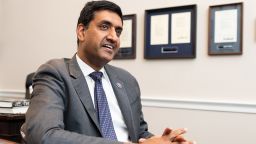
According to a report from economists at National Bank Financial Inc. (NBF), the fiscal support policymakers rolled out to counter the Covid crisis was “necessary to save their economies from complete collapse.” However, “these programs look retrospectively both too large and too long-lasting, especially in North America.”
The result is that global economic policy has been flipped on its head. Prior to the pandemic, most countries operated in an environment of relatively expansionary monetary policy and austere fiscal policy, the report said: “After two and a half years of pandemic, the model appears to have completely reversed.”
As a result, the report stated, “structural changes” to the global economy are more worrisome than the pandemic’s public health effects.
The return of high inflation and the policy response in the form of rapidly rising interest rates have dramatically dimmed global economic prospects for the next couple of years. Forecasts have been steadily ratcheting downward in recent months, with a recent report from Bank of Nova Scotia’s economics division declaring that a global downturn is now inevitable.
“The global economy cannot avoid a recession,” Scotia said, with the world’s second-and third-largest economies — China and Europe — facing “dramatic slowdowns.” For China, some of this weakness comes as a direct consequence of the pandemic, which it continues to fight with restrictive public health measures that curb output and disrupt supply chains.
In Europe, inflation and rising interest rates have been exacerbated by Russia’s invasion of Ukraine and its impact on Europe’s energy market.
Both economies also suffered climate-related disruptions this year that have compounded the economic misery.
Canada and the U.S. are expected to face their own economic malaise as the fight against inflation proves tougher than expected. According to Scotia’s report, “a series of policy missteps” in how governments and central bankers sought to address the emergence of high inflation are partly to blame.
To start, central banks underestimated the strength of inflation, having assumed it was largely the result of short-term supply issues and would prove temporary. The slow reaction “led to a loss of central bank credibility, leading to some unmooring of inflation expectations,” Scotia said. “It also led to a delayed response by policymakers, as they waited too long to begin normalizing policy.”
As a result, interest rates are being hiked faster and more aggressively than they probably would have been had central bankers moved at the early signs of inflation.
Fiscal policymakers also underestimated inflation and failed to do much to curb demand. Scotia’s report said it’s now “abundantly clear that pandemic support measures could have been rolled back more rapidly at the global level.”
Instead, governments facing runaway inflation have devised new fiscal tools to help those most affected — particularly lowerincome households — absorb rising costs. “As designed, this fiscal support has the unfortunate impact of blunting central bank efforts to fight inflation and may ultimately require higher interest rates to lower inflation,” Scotia said.
Scotia estimated that the Bank of Canada (BoC) will have to raise rates by an additional 25 basis points to offset the stimulative effects of added government spending that aims to cushion the effects of inflation.
Rapidly rising interest rates to combat inflation are having their own destabilizing effects, including a sharp increase in asset price volatility and declining housing markets. According to the NBF report, the Federal Reserve Board’s rapid tightening has pushed capital toward the U.S., putting the currencies of lower-rate countries under growing pressure and worsening inflation in these markets.
Scotia now foresees rates heading higher than previously expected, raising its forecast for U.S. interest rates by 150 bps to 5.0% in early 2023. “This additional tightening and a substantial decline in equity markets (impacting household wealth) are enough to trigger a recession,” the Scotia report said, forecasting economic growth of just 0.4% next year.
As the U.S. economy hits the skids, Canada’s is expected to slide into a technical recession too, Scotia said, with the BoC now expected to raise rates to 4.25% by the end of this year (50 bps higher than previously forecast). Scotia predicts growth slowing to 0.6% in 2023.
Global economy faces bout of long Covid - Investment Executive
Read More



/cloudfront-us-east-2.images.arcpublishing.com/reuters/WGEMYNUEIFPBJM7PCVW4GNZRP4.jpg)

